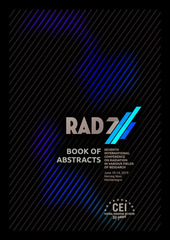Приказ основних података о документу
Temporal and spatial distribution of the beryllium-7 activity concentration in the surface air in Europe
| dc.creator | Ajtić, Jelena | |
| dc.creator | Djurdjević, Vladimir | |
| dc.creator | Sarvan, Darko | |
| dc.creator | Brattich, Erika | |
| dc.creator | Hernández-Ceballos, Miguel Angel | |
| dc.creator | Zorko, Benjamin | |
| dc.creator | Todorović, Dragana | |
| dc.date.accessioned | 2022-01-11T08:42:08Z | |
| dc.date.available | 2022-01-11T08:42:08Z | |
| dc.date.issued | 2019 | |
| dc.identifier.isbn | 978-86-901150-0-6 | |
| dc.identifier.uri | https://vet-erinar.vet.bg.ac.rs/handle/123456789/2344 | |
| dc.description.abstract | Since 2015, a scientific collaboration network between the University of Belgrade, the University of Bologna and the Radioactive Monitoring Environmental (REM) group of the European Commission Joint Research Centre – Ispra, has addressed the characterisation of the beryllium-7 concentration in the surface air recorded across Europe, and its link with meteorological conditions. A set of studies carried out over this period has been based on the beryllium-7 activity measurements collected and validated by the Radioactivity Monitoring Environmental Data Bank (REMdb) (https://rem.jrc.ec.europa.eu/RemWeb/Index.aspx). REMdb makes accessible and understandable to a wider audience radioactivity measurements made by all European Member States in the air, water, milk, and mixed diet. Thus, the scientific community is given research opportunities to exploit a unique collection of almost 5 million environmental radioactivity measurements taken across Europe since 1988. Our collaboration has also investigated other sets of multidecadal beryllium-7 activity concentrations: 1) sampled in Serbia and measured at the Vinča Institute of Nuclear Sciences, and 2) sampled in Slovenia and measured at the Jožef Stefan Institute. This paper compiles our current understanding of the abundance of beryllium-7, which is a naturally occurring radionuclide, in the surface air in Europe. Beryllium-7 is produced in the upper troposphere-lower stratosphere (UT-LS) region, where it attaches to fine aerosols and is then transported through the atmosphere. Due to its origin, it is considered a good tracer of air mass history, and it can be used as an indicator of different processes in the atmosphere, such as vertical exchange across the UT-LS region. Based on a number of our previous studies, we here give an overall picture of the beryllium-7 activity concentration distribution in Europe. We describe its general decrease from the south of the continent towards the polar region, different periodicities and outliers identified in the time series, and we make an effort to identify the underlying driving mechanisms that give rise to this distribution. We also look into temporal trends that show a statistically significant increase in the beryllium-7 surface concentration. Since temperature is one of the major factors that influence this radionuclide’s abundance in the air, we speculate that the trends are affected by the global increase in temperature. For that reason, we intend to further inquire into the possibility of using the beryllium-7 surface concentration as an indicator of climate change. | sr |
| dc.language.iso | en | sr |
| dc.publisher | Niš : RAD Centre | sr |
| dc.rights | openAccess | sr |
| dc.source | Book of Abstracts of the Seventh International Conference on Radiation in Various Fields of Research, June 10–14, 2019, Herceg Novi, Montenegro | sr |
| dc.subject | beryllium-7 | sr |
| dc.subject | surface air | sr |
| dc.subject | Europe | sr |
| dc.title | Temporal and spatial distribution of the beryllium-7 activity concentration in the surface air in Europe | sr |
| dc.type | conferenceObject | sr |
| dc.rights.license | ARR | sr |
| dc.citation.spage | 9 | |
| dc.citation.epage | 9 | |
| dc.citation.rank | M34 | |
| dc.identifier.fulltext | http://veterinar.vet.bg.ac.rs/bitstream/id/6487/bitstream_6487.pdf | |
| dc.identifier.rcub | https://hdl.handle.net/21.15107/rcub_veterinar_2344 | |
| dc.type.version | publishedVersion | sr |
| dc.identifier.cobiss | 277775116 |

